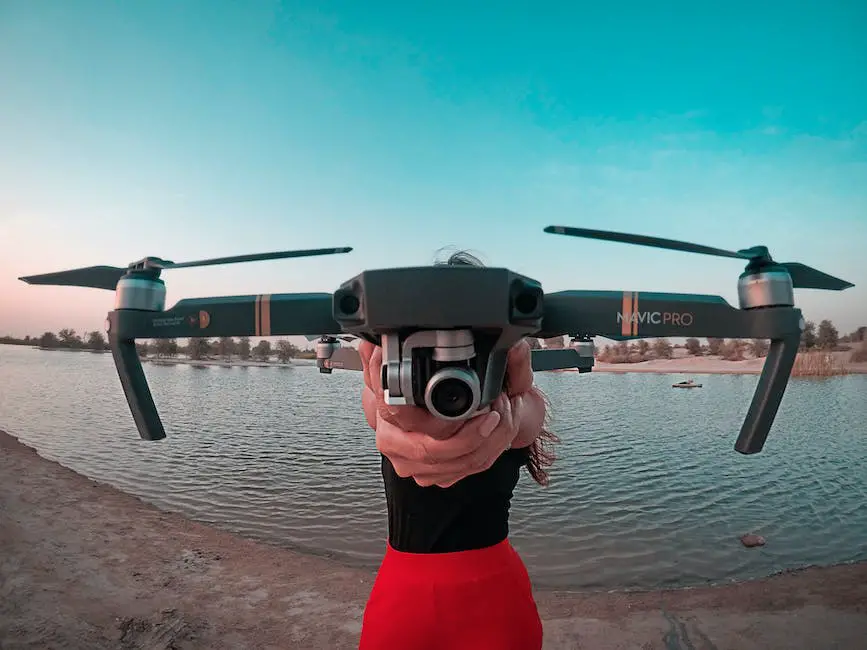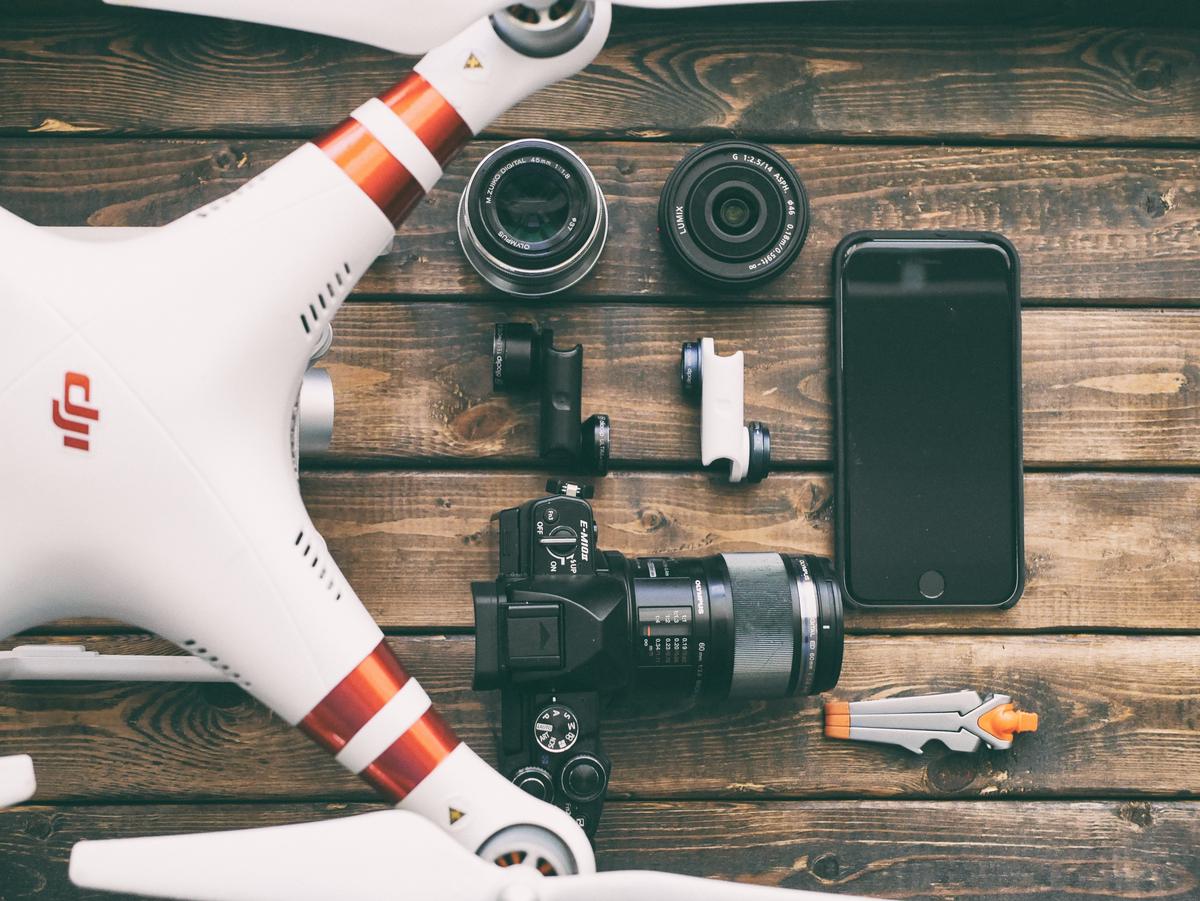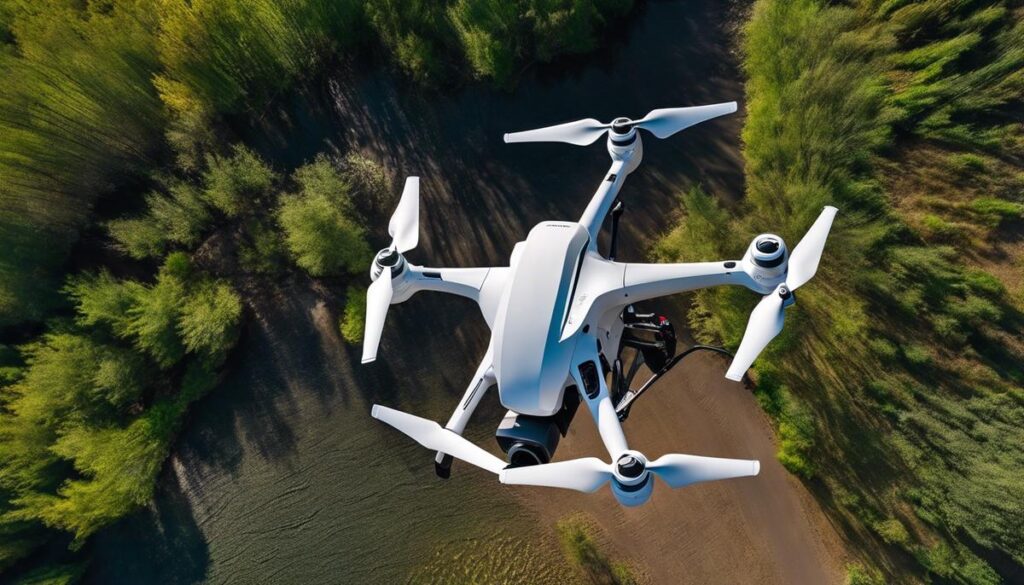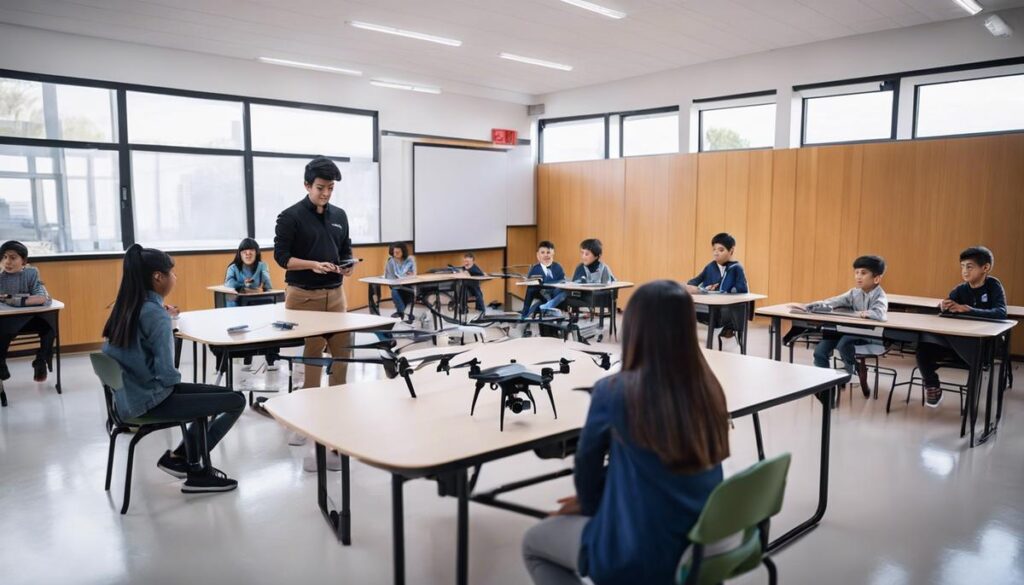Unleashing the full potential of your DJI drone extends beyond its primary features and capabilities; it’s about harnessing the power of its diverse array of attachments. Whether you’re a seasoned drone enthusiast or a newbie hobbyist, embracing the various types of DJI drone attachments can significantly diversify your drone piloting experience. Drones are no longer solely for sky-high photography; with appropriate attachments, they have found their place in racing, cinema, safety and security, and even agriculture. This essay explores the wide array of DJI drone attachments – from additional batteries and prop guards to gimbal stabilizers and cutting-edge cameras. Not only will we help you understand their design and features, but we’ll guide you through proper installation, usage optimization, as well as crucial maintenance and safety practices to prolong the lifespan and maximize the performance of your favorite gadgets.
Understanding Different Types of DJI Drone Attachments
Drone Cameras
One of the most vital attachments in a DJI drone is the drone camera. This offers the user a unique bird’s eye view, enabling photography and videography of high-quality from unparalleled angles and heights. Among the top options provided by DJI are the Zenmuse series including Zenmuse X7 and X5S, known for their superior image quality, interchangeable lenses and advanced stabilization. They deliver striking visuals whether utilized by professional photographers or hobbyist drone enthusiasts.
Extra Batteries
Possessing extra DJI batteries extends operational time and enhances users’ flying experience. More air-time is assured through accessories like the Phantom series Intelligent Flight Batteries, Mavic series Intelligent Flight Batteries and the TB50/TB55 series used by industrial drones. These aren’t mere ‘batteries’; besides providing more flying time, they provide critical data in real-time and maintain optimal performance in varying environments. Providing drone users peace of mind while keeping their devices powered up.
Prop Guards
Prop guards provide protection for drones during flight, making them an essential accessory. DJI offers specific prop guards for different drone models, like the Mavic Propellor Guard, Spark Propellor Guard, and Phantom Propellor Guard. These protective gears are designed to reduce the risk of damage to your drone, not only during crashes and rough landings but also while navigating through confined and cluttered spaces.
Lens Filters
Lens filters can positively impact the quality of footage captured with drone cameras by managing light entering the lens. DJI offers a range of lens filters compatible with their drones, for instance, the ND filter set for Mavic Pro, and the Osmo Pocket filters set. These accessories reduce glare, enhance color saturation and suppress the “jello effect”, considered indispensable in professional drone photography/videography.
Gimbal Stabilizers
Gimbals are vital for capturing smooth and stabilized videos, regardless of the drone’s movements. Gimbal stabilizers like the Ronin series from DJI are popular owing to their advanced stabilization, precision control, and reliable build. The versatility of using them handheld or mounted on a vehicle, aircraft, or drone makes them popular among professionals and hobbyists.
DJI drone accessories are specifically engineered to enhance the user experience by providing ways to increase creative possibilities. By familiarizing oneself with a variety of DJI drone attachments, users are able to optimize their drones’ effectiveness, safety measures, as well as the quality of images captured.

Installation of DJI Drone Attachments
Digging Deeper into DJI Drone Attachments
DJI drone attachments can significantly boost the overall functionality of your DJI drone. They come in a variety of forms including cameras, gimbals, lights, propeller guards, among others.
Before embarking on the installation, it is crucial to understand the specific attachment and its function. A thorough read of the instruction manual is therefore, not only advisable but essential.
Installing DJI Drone Camera Attachments
Installing a DJI drone camera is typically a straightforward process. First, make sure your drone is turned off and the battery is removed. When handling electronic components, it’s essential to ground yourself to remove any static electricity build up.
Attach the camera to the gimbal, ensuring it is firmly secured. Depending on the model, you may need to screw it in place or it could simply snap into position. Once attached, connect the camera to your drone via the provided cable. Be sure not to force any connections as this could cause damage.
Mounting DJI Drone Gimbal
A gimbal is crucial for ensuring steady and clear footage while your drone is in the air. Just like the camera, begin with the drone powered down and battery removed. Locate the gimbal mounting plate under your drone and align the gimbal accordingly. Using a screwdriver, secure the gimbal in place. Always cross-check that all camera and gimbal cables are properly connected and free of obstructions.
Attaching DJI Drone Lights
DJI Drone lights are useful for flying at dusk or in low visibility conditions. These lights are typically attached to the underside of the drone. After locating the attachment brackets, bolt the lights onto your drone and plug the power cables into the drone’s main power source. Like all other attachments, ensure the cables are not interfering with any moving parts.
Mounting Propeller Guards
Propeller guards are a safety feature that can prevent damage to your drone’s propellers. They snap onto the underside of each arm, sitting just below the propellers. It is important to confirm they are locked in place before taking flight.
Troubleshooting DJI Drone Attachment Installation
Troubleshooting common problems with DJI drone attachments usually involves looking out for loose connections, poorly mounted hardware, or interfering cables. An often overlooked process is resetting the drone and controller after installing a new accessory. This can be done through the settings on the DJI app.
If the installed attachment fails to function as expected, remove and reinstall it, checking for correct alignment and secure fit. For attachments that run on power such as cameras and lights, ensure the cables are connected to the power source.
In Summation
The addition of DJI drone attachments can significantly enhance your drone’s functionality. Gaining proficiency in their assembly and problem-solving allows for optimized drone performance, thereby enriching your drone navigating experiences.

Perfecting the Use of DJI Drone Attachments
Diving Deeper into DJI Drone Attachments
Attachments for DJI drones are crucial components designed to broaden the capabilities of the drone, consequently amplifying its usage. These technologically advanced add-ons range from cameras, gimbals stabilizers, and lights to propulsion systems, remote controllers, and batteries. The versatility and functionality that your drone can offer are largely dependent on these attachments, which vary based on your specific usage of the DJI drone.
How to Utilize DJI Drone Attachments for Aerial Photography and Filming
For purposes of photography and filming, the camera attachment is one vital piece to comprehend, particularly its resolution capabilities, lens type, and aspect ratio. The DJI drones usually allow for an upgraded camera system to allow for a wider frame, better resolution, and overall improved image quality. For instance, drones like the DJI Phantom series have remarkable cameras that shoot in 4K Ultra HD and feature a 1-inch CMOS sensor.
The gimbal stabilizer attachment, on the other hand, is essential in providing stability during flight, ensuring shake-free footages. This device gives the camera its range of motion and keeps it steady at the same time. DJI’s Zenmuse series delivers advanced stabilization features essential for filmmakers who require seamless and smooth footage.
Using Attachments in Drone Racing
If speeding through obstacle courses is your thrill, there are specific DJI drone attachments to consider. Powerful batteries and efficient propulsion systems come in handy to provide you with speed and control. Attachments such as LEDs can add aesthetics as you blaze through the course but can also serve a practical purpose. Propellers are another indispensable attachment in drone racing; specific propellers can boost speed, while others can enhance maneuverability.
Safety and DJI Drone Attachments
Furthermore, safety is an integral aspect of drone flying, and DJI drone attachments can contribute significantly to this. Propeller guards are recommended for novice users and for flights in narrow or cluttered spaces. They help prevent collisions that could damage the drone or harm people or property. Batteries with automated discharge, overcharge protection, and temperature checks like the DJI Intelligent Flight Battery help ensure safe flights.
Highly advanced and versatile drones also come with extras such as anti-collision beacons that brightly flash to signal the drone’s location, especially beneficial in low-light conditions and complex environments. These attachments ensure the drone, the control operator, and the surrounding environment are well protected.
Maximizing your flight experience with your DJI drone entails understanding your needs and the specific functions of each attachment. With a wide array of options available, the key is to familiarize yourself with how each one supports your intended drone operations. This can significantly enhance your overall user experience.

Photo by aaronburden on Unsplash
Maintenance and Safety of DJI Drone Attachments
Meticulous Inspection and Regular Maintenance
The pride of owning a DJI drone also requires the commitment to its regular upkeep. It’s important to conduct routine inspections of drone attachments to ensure optimal function. Critical components such as the propellers, camera, gimbal, and batteries need to be regularly checked for dirt, cracks, or misalignments. In case of any detected issues, immediate cleaning or replacement is necessary. Prioritizing regular maintenance not only makes your flights safer but also helps prolong the longevity of your drone.
Proper Storage of DJI Drone Attachments
Proper storage is key to preserving the quality and lifespan of your DJI drone attachments. It is recommended to store attachments in a location that is dry, cool, and devoid of direct sunlight exposure. When packing your equipment for storage, consider investing in high-quality storage bags or containers. These can protect your attachments from dust, moisture, and physical damage. Always ensure that your drone batteries are fully charged before storing to maintain optimal battery health.
Avoiding Damage to Your Attachments
Many factors can contribute to the damage of DJI drone attachments. Physical shocks due to crashes, exposure to harsh elements such as extreme temperatures or humidity, and improper handling can significantly reduce their durability. Make sure to follow handling instructions meticulously and practice safe flying to avoid mishaps. When not in use, store your drone and attachments safely to prevent accidental falls or scratches.
Legal and Safety Factors to Consider
As a DJI drone user, you are bound by certain rules and regulations, and it’s crucial to be aware of them. Consider legal factors such as flying in designated areas, maintaining a certain flight altitude, and respecting privacy laws. Violating these could lead to severe penalties and can even cost you your drone. Additionally, safety factors such as not flying in inclement weather or near obstacles should always be kept in mind to ensure safe and worry-free flight sessions.
The Importance of User Manuals
Never underestimate the importance of your user manual as it is a valuable resource. This manual details how to operate, maintain, and troubleshoot your DJI drone attachments correctly. Following the recommended practices found within your manual will go a long way in helping you avoid damage or misuse of your drone and its attachments, ensuring the longevity and performance of your equipment.
Using Genuine DJI Parts
One last important note, always use genuine DJI parts when replacing or upgrading your drone attachments. While third-party accessories may seem appealing due to their lower costs, they may not be specially designed for DJI drones and hence might not perform optimally or safely. Using genuine parts assures compatibility, top-notch performance, and the safety of your drone.

As we take our journey through the world of DJI drone attachments to a close, the overarching goal is to help drone enthusiasts expand their skills and appreciate the vast range of drone applications beyond pure recreational use. By understanding the types of attachments available, properly installing them, optimizing their usage, and following vital maintenance and safety guidelines, aviophiles can take their passion for drones to a whole new level. Remember, it’s not just about flying; it’s about leveraging on drone technology to capture breathtaking views, explore new terrains, challenge speed limits, and even contribute to safety and security. Arm yourself with this knowledge, and there’s no limit to what you can achieve in the ever-evolving landscape of drone aviation.
Originally posted 2023-08-30 01:05:05.




